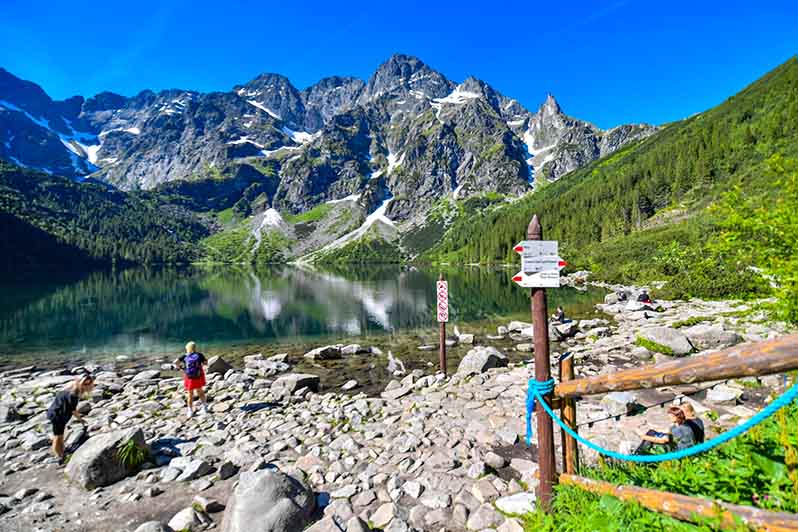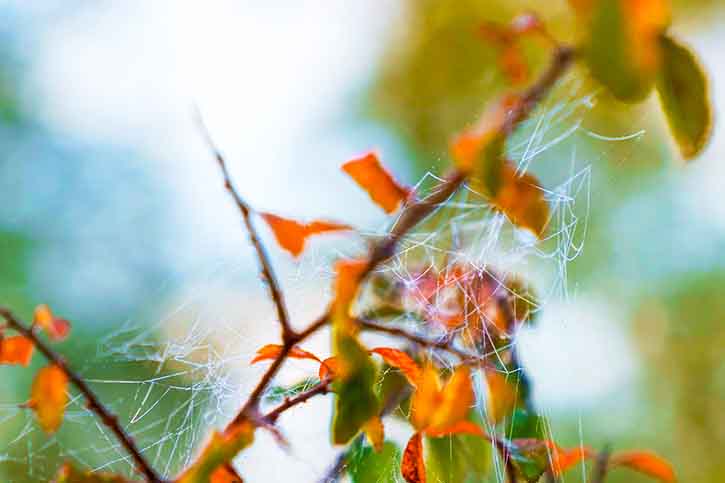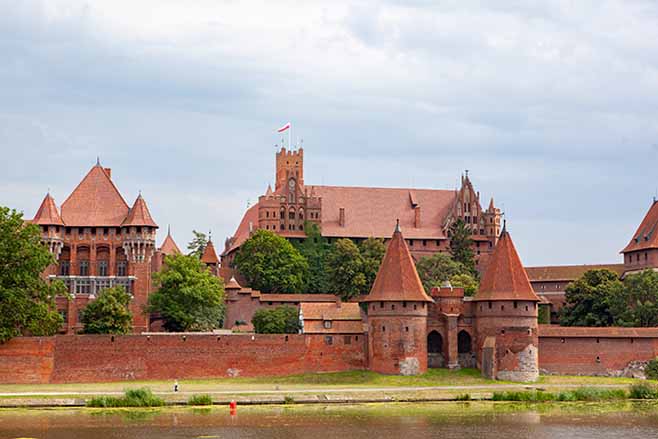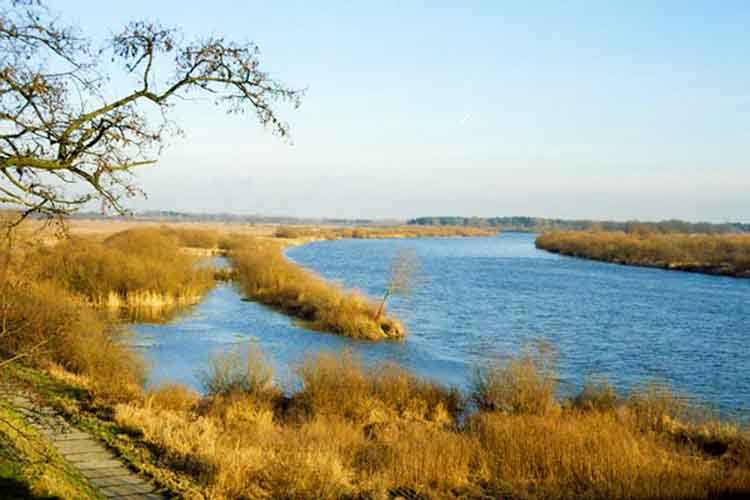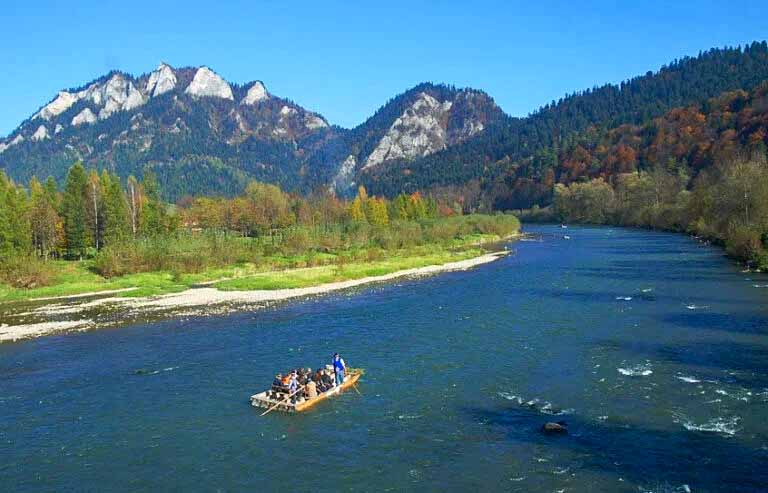Ogrodzieniec Castle is undoubtedly one of the most important monuments not only in the Jura region but also in all of Poland. Its turbulent history has transformed the building over the centuries into a picturesque ruin, offering a beautiful view of the Kraków-Częstochowa Upland.
The remains of this majestic structure, which dominates the gentle hills of the Kraków-Częstochowa Upland, are the work of King Casimir the Great. He ordered the construction of a substantial Gothic castle on Janowski Hill, 550.5 meters above sea level. Together with other strongholds, it secured the southwestern border of the Kingdom of Poland against invasions from the south. A wooden stronghold, probably built in the 12th century, previously existed on this site, but it was most likely burned down by the Tatars.
In accordance with King Casimir's plan, it became a royal castle, managed by his envoy, Przedbór of Brzezie. During the reign of King Władysław Jagiełło, the castle passed into the hands of the knightly Włodek family of the Sulima coat of arms. In the following centuries, it changed hands, and its rise and fall, wealth and debt, were highly variable.
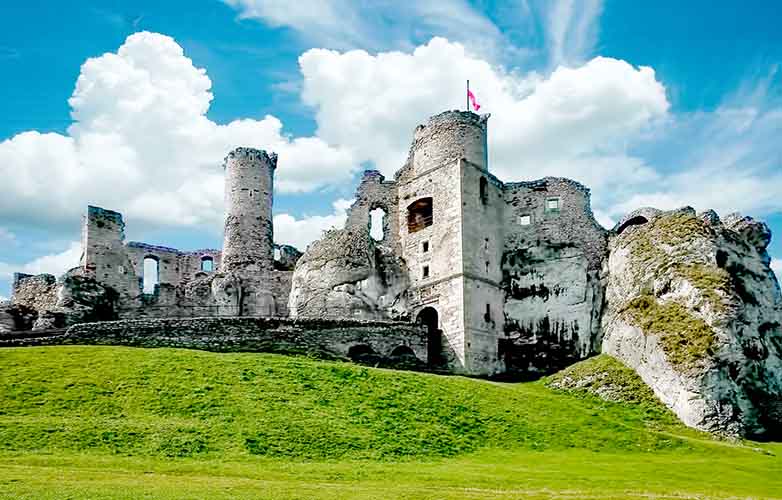
Ogrodzieniec Castle (Source: Wikipedia)
In 1523, banker Jan Boner took it over for debt, and his heir undertook the task of rebuilding and expanding the castle. Over the course of several decades, Renaissance elements were added to the Gothic structure, making Ogrodzieniec Castle resemble Wawel Castle. By the mid-16th century, the castle was also expected to rival Wawel Castle in opulence and splendor, though on a much smaller scale.
Ogrodzieniec's golden years lasted until the first half of 1587, when it was captured and plundered by the forces of Archduke Maximilian Habsburg, seeking to seize the Polish throne. The destruction was completed a century later by the Swedish forces of King Charles X Gustav. The ruined castle was purchased by the Kraków magnate Stanisław Warszycki, who rebuilt the damaged walls, built stables, and a defensive wall. At the beginning of the 18th century, the Swedes once again laid claim to the Ogrodzieniec estate, destroying and burning everything that had been rebuilt. After this conflagration, Ogrodzieniec never regained its former glory, although in the following decades, new owners attempted to rebuild it from the ruins.
At the end of the 18th century, the then-owner, Tomasz Jakliński, began to treat the large stone structure as a reservoir of building materials. Thanks to him, a nearby church was built from the castle stone. In 1810, the last owner, fearing collapse, moved to a nearby farm. In the following decades, local residents carried stones from the ruins to build their own homes. It wasn't until 1885 that traveler and local expert Aleksander Janowski stumbled upon the picturesque ruins, and thanks to his efforts, the Polish Tourist Society was founded in 1906, with the goal of preserving the castle remains.
The Red Army carried out further devastating operations on the Ogrodzieniec ruins during their 1945 liberation offensive. After the war, the remains were cleared, archaeological excavations were conducted, and a relatively safe tour route was established. Those interested can see the remains of buildings on two levels – on the castle grounds are the remains of former stables and a forge. In the upper castle, visitors can see the former kitchen, chambers, and bedrooms. The castle buildings cover 3.5 hectares.
The entire complex consists of two parts: the outer bailey and the upper castle. The outer bailey once housed stables, coach houses, a forge, a brewery, and a distillery, and currently houses a torture chamber in the southern corner. The upper castle once housed a kitchen, a well, bedrooms, and residential and ceremonial chambers. The entire complex covers an area of approximately 3.5 hectares, with a defensive wall approximately 400 meters long.
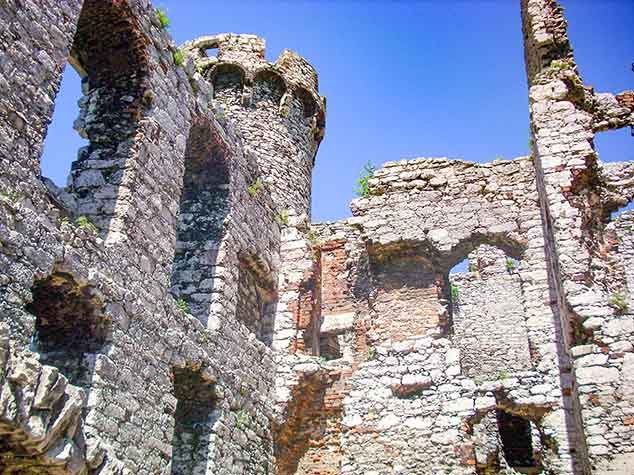
The walls of Ogrodzieniec Castle (Source: Wikipedia)
The oldest part of the castle, located on the northern side on a rock, is known as the High Castle. Cloisters once ran around the lord's courtyard, connecting the various parts of the castle on each level. In this courtyard, the rooms that were once Hajduk shops have been rebuilt on the sides. In the center, there is a reconstructed rainwater cistern. This level also housed the castle kitchen, next to which was a well and the living quarters for the cooks. Beneath the kitchen were gun cellars that served as pantries. Today, a stylish knight's inn stands there. The upper levels of the castle housed bedrooms, a dining room, living quarters, a treasury, an armory, a powder magazine, and a storage room.
There are also towers situated on the rocks, which served as observation and defense, while the southern tower was also a prison. To the south is the so-called "hen's foot," an extension that expanded the living quarters and enhanced the castle's defensive capabilities. Two courtyards are located on either side of the chicken foot. The smaller "birdhouse" courtyard, which encloses the curtain wall and features reconstructed wooden porches, served a utility function, likely housing poultry. The second courtyard, the so-called "tournament courtyard," likely served as the castle garden, though it also had defensive advantages.
From the castle's higher elevations, weather permitting, there are impressive views of the Jura Mountains, as well as Czubatka, the highest peak in the highlands, which crowns the castle hill. During the tourist season, the castle hosts various historical and outdoor events, such as the "Barbarian Invasion," the "International Knights' Tournament," "Juromania," and others. Furthermore, nighttime thrilling events, such as "Evenings with Ghosts" and the "Ogrodzieniec Night of Horror," are organized. The "Balloonade," a balloon competition, is also very popular. Major hiking, cycling, and horseback riding trails intersect near the castle.
Ogrodzieniec Castle is undoubtedly one of the most important historical monuments not only in the Jura Mountains but also in all of Poland.
Translation from Polish by Andrew Woznieiwicz.







